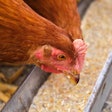
Asia Nutrition Technologies (ANT) has joined two other animal feed companies in setting up a feed mill in Cambodia’s largest industrial park in the capital, Phnom Penh.
Part of Taiwan-based Great Wall Enterprise, ANT has signed a long-term lease for a livestock feed factory on 2.8 hectares of the Phnom Penh Special Economic Zone (SEZ).
According to Phnom Penh Post, when complete in 2019, the new mill will have an annual output of 144,000 metric tons and provide employment for 150 workers. The firm will produce its three signature brands at the plant — Red Star, Dachan and Dr. Nupak.
ANT is set to join two other feed producers, China-Japan joint venture New Hope and Thailand’s Betagro, in the Phnom Park SEZ.
According to the firm’s website, ANT is affiliated with DaChan Food Asia, a multinational corporation. Founded in 1995, ANT aims to become one of the market leaders in livestock feed and aquaculture production, specializing in feed for cattle, poultry and fish.
Reducing Cambodia’s reliance on imports
According to senior manager of Phnom Penh SEZ, Michelle Zhao, as purchasing power among Cambodians rises, international feed companies are seeing the potential for growth in the country’s feed sector to supply the demand for meat.
ANT is typical of companies that supply the Cambodian market from other countries – in its case, from Vietnam.
“There are more and more domestic-oriented manufacturers looking at Cambodian operations now, especially in the Phnom Penh area,” said Zhao.
This year, Phnom Penh Post reported that locally based conglomerate, Chip Mong Group, was investing US$60 million in a new large-scale feed mill and pig production facility in Cambodia, which are scheduled to come into production in 2019.
At the time, a senior official in the agriculture ministry said the move would help reduce the country’s reliance on imported animal feeds, which had amounted to US$135 million the previous year. A further US$400 million had been spent to import 400,000 pigs from neighboring countries to meet Cambodians’ ever-increasing demand for pork.
Director of Chip Mong Group, Leang Khun, said the new feed mill had an annual capacity of 200,000 metric tons. About 70 percent of that output was destined for the firm’s 280,000 pigs, and the rest would be sold to the local market.
In December 2016, another local conglomerate, Mong Reththy Group, inaugurated a US$10 million feed mill in Cambodia. Using mainly local rice and corn, its annual capacity is 60,000 metric tons of animal feed for 100,000 pigs on its own farm as well as 100 nearby family-owned farms.
Several feed mills have been opened in Cambodia over the past five years, according to the USDA Foreign Agricultural Service in a recent GAIN report, bringing to more than 10 the number of large-scale production facilities in the country.
It estimated total feed production in Cambodia at 700,000 metric tons per year, based on rice products, corn, cassava and wheat. Imported compound feed and homemade feed completed the country’s total feed demand.

















